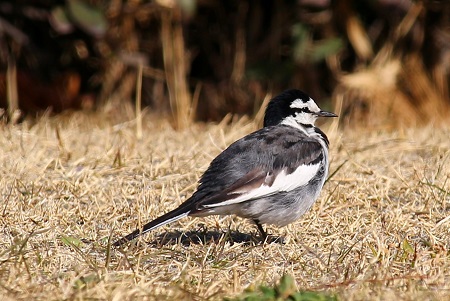I visited Kanagawa Prefecture to see biological impacts of Fukushima No.1 nuclear power plant accident. Though I have visited various places in Japan to see the health consequences of the accident, I have never found any effect against creatures in Japan.
Kanagawa Prefecture is located almost in the center of the Japanese Archipelago, sharing a boundary with Tokyo. It is 2,416 sq. km in area, making it the fifth smallest of the 47 prefectures in Japan. On the other hand the population is about 9.05 million, which is the second largest in Japan. Blessed with beautiful natural assets, Kanagawa boasts an extended coastline to the south and lush mountain ranges and lakes in the west. The climate is moderate due to the warm current running along the Pacific side of the archipelago.
Generally speaking, birds and plant's growth is so fast than human beings that they are more sensitive to radioactive materials of the environment than us. So I visited there to see effects of the accident against creatures which are grown up by Japanese food and water.
Fortunately, I can see them grown up safely and I cannot find any impact of the accident. It seems that there is no problem for childbirth and child-rearing in Kanagawa Prefecture, Japan.
Posted by Yoshitaka Kiriake from Japan on April 7, 2015.
コゲラ
Japanese Pygmy Woodpecker
ジョウビタキ
Daurian Redstart
Phoenicurus auroreus
Daurian Redstart (male)
Daurian Redstart (female)
カワセミ
Common Kingfisher
Alcedo atthis
オナガ
Azure-winged Magpie
Cyanopica cyana
セグロセキレイ
Japanese Wagtail
Motacilla grandis
ハクセキレイ
Japanese Pied Wagtail
White Wagtail
Motacilla alba lugens
メジロ
Japanese white-eye
Zosterops japonicus
シジュウカラ
Japanese Tit
Parus minor
ツグミ
Dusky thrush
Turdus eunomus
ムクドリ
White-cheeked Starling
Sturnus cineraceus
ホンセイインコ
Psittacula
コサギ
Little Egret
Egretta garzetta
カワウ
Great Cormorant
Phalacrocorax carbo
カルガモ
Grey duck
Spotbill duck
Anas poecilorhyncha
コガモ
Common Teal
Anas crecca
マガモ
Mallard
Anas platyrhynchos
オナガガモ
Northern Pintail
Anas acuta
ヒドリガモ
Eurasian Wigeon
Anas penelope
キジバト
Oriental Turtle Dove
Streptopelia orientalis
白鳩
Dove
鶴岡八幡宮
Tsurugaoka Hachimangu : a shinto shrine
Sakura : Cherry blossoms
About Tsurugaoka Hachimangu Shrine
Google map
KAMAKURA TOURIST MAP
常立寺 しだれ梅が有名
Joryuji Temple
Google map
Ume : Prunus mume
Japanese foods are good and safe.
Because of stricter food safety law by Japanese government, we have no worry about foods.
Oden : Japanese pot-au-feu
Cake
Sushi
4 years have passed since Fukushima Daiichi nuclear power plant accident. I have visited various places of Japan to see the health consequence of the accident.
Fortunately I have never found any impacts by the accident among Japanese creatures. As far as I know, nobody has health problem which is caused by the accident in Japan.
Our Prime Minister Abe assures that "The situation is under control. The influence of the contaminated water is completely blocked within Fukushima. There are no health-related problems until now and there will never be health problems." He also said that "Tokyo is 250 kilometers away from Fukushima, and the kind of danger that you imagine does not exist in Tokyo. Tokyo is a very safe city."
As PM Abe said, Kanagawa Prefecture is very far away from Fukushima, people in there have no concern about the nuclear power plant accident. People in there have already forgotten the accident, because they think radioactive materials cannot reach there.
We know there is no problem for child birth and child rearing in Kanagawa Prefecture. So people in there are living without any concern about the accident.
I continue to visit various places in Japan to see the effects of the accident, because I can meet various creatures which are more sensitive to radioactive materials from the environment. It is important to see their health for our safety.




































0 件のコメント:
コメントを投稿